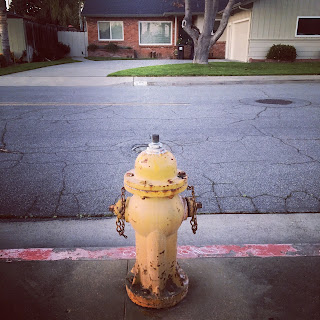Fire Hydrant
Hydrants evolved from fire plugs. The term stems from when water mains were made of wood, either from
hollowed-out logs or wooden staves bound together, as in a wine cask.
When there was a fire, firefighters would dig into the ground, find the
main, then use an augur to drill a hole into the wooden pipe. The earthen hole would fill with water.The hydrants in some areas are known as dry-barrel hydrants. When the nut
on top is turned, it opens a valve all the way down at the water main,
below the ground, allowing water to come up to the hydrant’s nozzles.
That way, water in the hydrant won’t freeze. Warmer climates such as
Southern California use wet-barrel hydrants, where the water is right at
street level.
